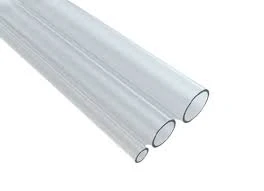Nov . 19, 2024 13:28 Back to list
Guide to Gas Pipe Fittings and Their Applications in Plumbing Systems
Understanding Gas Pipe Fittings A Comprehensive Overview
Gas pipe fittings are essential components in the installation and maintenance of gas distribution systems. These fittings ensure the safe and efficient transportation of gas from one point to another in residential, commercial, and industrial applications. Understanding the various types and uses of gas pipe fittings is crucial for anyone involved in plumbing, HVAC, or construction work.
Gas pipe fittings come in various shapes and sizes, each designed for specific functions. Common types include elbows, tees, couplings, and reducers. An elbow fitting allows for a change in direction, typically at a 90-degree or 45-degree angle, crucial for navigating around obstacles in piping layouts. Tees enable branching the gas line, connecting three sections of pipe in a ‘T’ configuration. Couplings serve as connectors that join two straight lengths of pipe, while reducers help connect pipes of differing diameters, facilitating a smooth transition in gas flow.
Materials used to manufacture gas pipe fittings are critical for safety and durability
. Common materials include brass, steel, and PVC. Brass and steel are widely used due to their strength and resistance to corrosion, making them suitable for high-pressure gas applications. PVC, often used for venting and drainage, is not recommended for high-pressure gas systems due to its lower strength and susceptibility to temperature changes.gas pipe fittings

The proper installation of gas pipe fittings is paramount to ensure safety and prevent leaks. Each fitting must be tightly secured and tested for leaks, typically using soapy water or specialized leak detection solutions. It is essential to follow local codes and regulations when installing gas piping systems, as these standards are designed to ensure the safety of both the installers and the end-users.
Maintenance of gas pipe fittings involves regular inspections to identify any signs of wear, corrosion, or damage. Proper maintenance can help prolong the life of the fittings and ensure safe operation. For gas distribution systems, it is also crucial to ensure that all connections are adequately sealed and that there are no gaps where gas could escape.
In conclusion, understanding gas pipe fittings is vital for anyone in the plumbing and construction industries. By selecting the right materials, ensuring proper installation, and conducting regular maintenance, professionals can ensure the safe and efficient operation of gas systems. Whether you are installing a new gas line or maintaining an existing system, knowledge of gas pipe fittings is indispensable for promoting safety and reliability in gas distribution.
-
High-Quality PPR Pipes and Fittings Durable ERA PPR & PVC PPR Solutions
NewsJul.08,2025
-
Black HDPE Cutting Board - Durable, Non-Porous & Food Safe HDPE Plastic Cutting Board
NewsJul.08,2025
-
High-Quality CPVC Panel Durable HDPE & PVC Panels Supplier
NewsJul.08,2025
-
Double PE Welding Rod Supplier - High Strength, Durable & Versatile Welding Solutions
NewsJul.07,2025
-
High-Quality PVC-O Pipe Supplier Durable 75mm PVC Pipe & Connections Leading PVC Pipe Company
NewsJul.07,2025
-
HDPE Drainage Pipe Supplier – Durable & Corrosion-Resistant Solutions
NewsJul.06,2025

